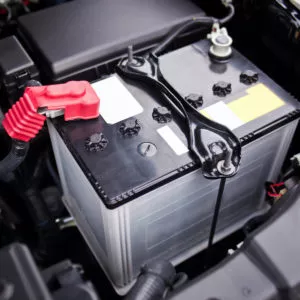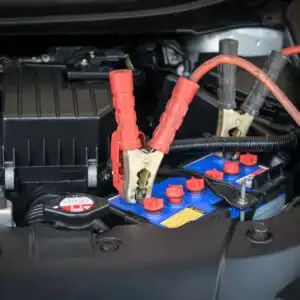“What should my battery voltage be?” you may ask. On a full charge, automotive batteries have 12.6 volts or above. When the engine’s running, the battery should have 13.7 to 14.7 volts. If it’s starting to show signs of decline, it’s best to have your car’s battery tested as soon as possible. If you have a multimeter, you can do this yourself. Learning how to test if a car battery is good yourself can save you time and money.

Testing the Car Battery
Check out the steps below for a guide on how to test a car battery safely:
Step 1: Prepare your ride for the battery test.
Turn off your ignition as well as all the lights and other electric or electronic device that may use battery power when the ignition is off. Disconnect the ignition system by uncoupling the ignition coil or taking out the fuel pump fuse or relay.
Step 2: Check for voltage drop at the battery terminal connections
Voltage drop at a bad battery terminal connection is sometimes difficult to spot with a just simple visual inspection; hence, you should use a multimeter, or in extreme cases, a test light as shown in this very short video:
Notice in the video that there isn’t a lot of visible corrosion but current still doesn’t flow until the terminal is twisted by hand.
To test for voltage drop at the battery terminals on top post batteries, start with the key in the “off” position and have all the doors closed and all accessories off.
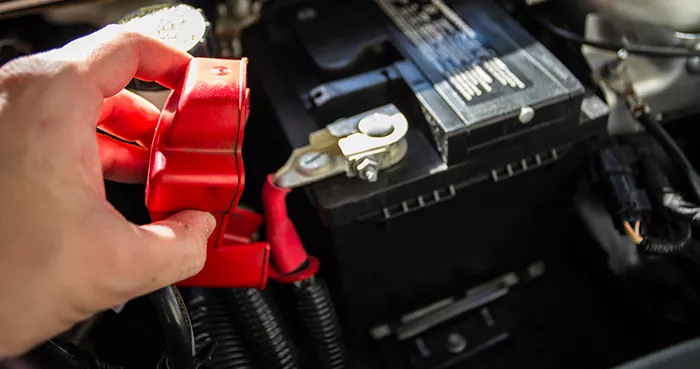
Touch the red probe of the multimeter to the positive battery post and the black probe to the cable terminal that connects to the same battery post. Ask someone to crank the engine and take note of the reading.
Do the same for the other battery terminal but this time, the black probe should be the one touching the negative battery post and the meter’s red probe to the cable terminal that connects to the same battery post. If the multimeter registers more than 0.5 volts on the positive terminal or more than 0.1 volt on the negative terminal,remove and clean the terminals.
If the multimeter registers more than 0.5 volts on the positive terminal or more than 0.1 volt on the negative terminal,remove and clean the terminals.
–Richard McCuistian, ASE Certified Master Automobile Technician
Step 3: Test the battery
Testing your car’s battery voltage can be done using a voltmeter or a power probe.
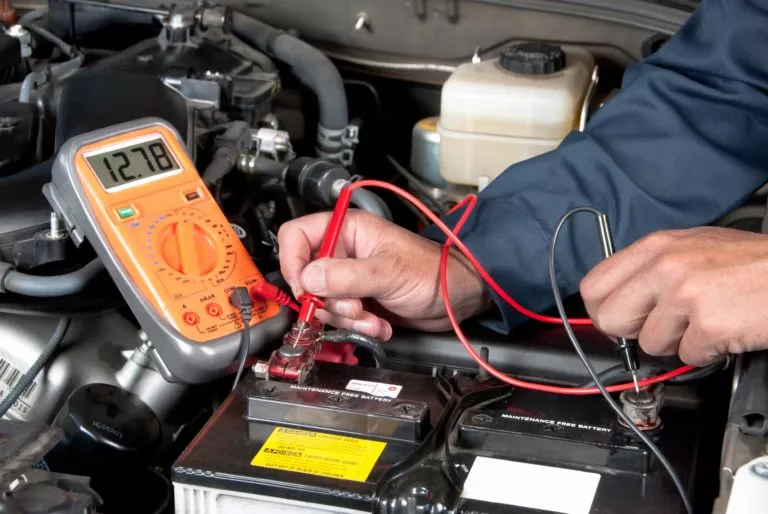
How to test a battery with a voltmeter
Take out the battery’s terminal cover and clean the terminals. Set the voltmeter to the lowest voltage setting that’s above 15 volts. On most meters there will be a 20 volt setting, but make sure you select DC and not AC.

Connect the voltmeter’s positive (red) lead to the battery’s positive terminal and touch the voltmeter’s negative (black) lead to the battery’s negative terminal. Check the voltage reading.
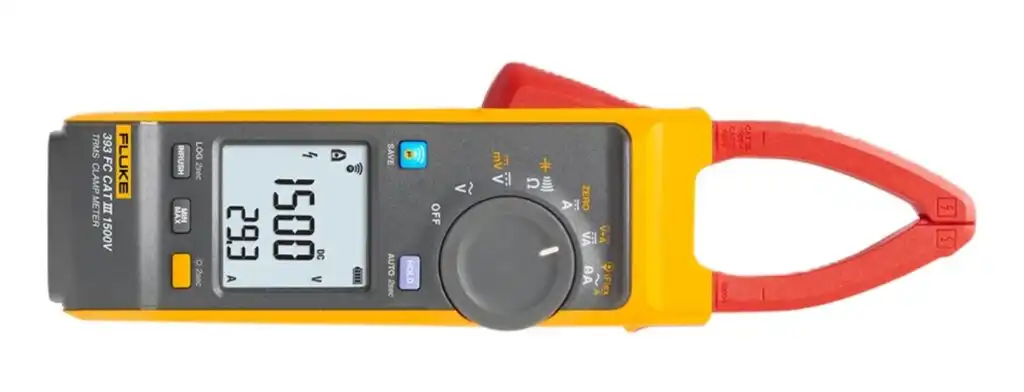
How to test a battery with a power probe
Remove the battery’s terminal cover and attach the positive (red) lead of the power probe to the battery’s positive terminal. Connect the negative lead of the power probe to the battery’s negative terminal. Touch the tip of the probe to the battery’s positive terminal and check the voltage reading.
Step 4: Interpret the voltage reading.
A voltage reading of 12.4 up to 12.7 volts means the battery is in good condition. A reading below 12.4 volts means the battery needs to be charged. If the reading is lower than 12.2 volts, you will need to trickle charge the battery and repeat the test.
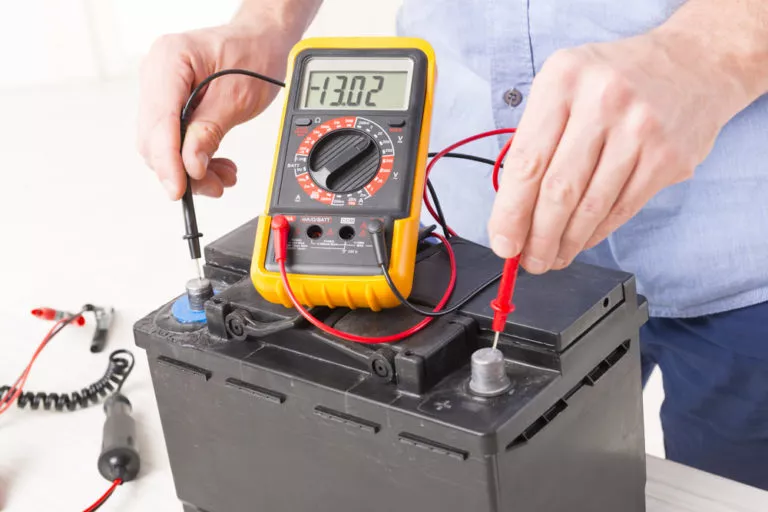
The battery has excessive voltage if the voltmeter or power probe displays more than 12.9 volts. In this case, you can turn on the car’s high beams to reduce excessive voltage surface charge. You may also have the alternator checked as it’s possible that it is over charging the battery.
Testing the Battery with a Carbon Pile Tester
With a carbon pile tester, during a 15-second load at half the cold cranking amp rating, the voltage shouldn’t drop below 9.6 volts. If you can spin the starter without starting the engine (fuel and spark both disabled) for 15 seconds without the voltage going below 9.6 volts during that 15 second spin, that battery is good enough for your car.
Any information provided on this Website is for informational purposes only and is not intended to replace consultation with a professional mechanic. The accuracy and timeliness of the information may change from the time of publication.






